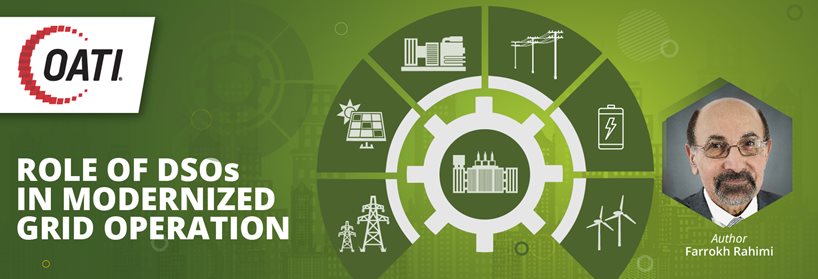Home » Blog » Grid Modernization » Role of DSOs in Modernized Grid Operation
Role of DSOs in Modernized Grid Operation
The electric industry is undergoing a paradigm shift due to a combination of factors. The increased use of renewable resources both in bulk power and distribution, new technologies, increased demand-side participation, and increased emphasis on grid resilience are the primary drivers for this shift.
At the distribution level, improper management of Distributed Energy Resources (DERs) gives rise to operational issues such as voltage fluctuations, reverse flows, and phase imbalances. At the bulk power level, increasing penetration of Variable Energy Resources (VERs) increases demand on the power system for higher volumes of flexible reserves and ancillary services. Assets located throughout the distribution systems including Demand Response (DR) and customer-side DERs can supply most of the needed services and products. However, the bulk power system operators (Balancing Authorities, ISOs/RTOs) have limited visibility and control over such distributed resources.
Benefits of a DSO
A new Distribution System Operator (DSO) construct was proposed by OATI in 2014 and has since emerged as a useful construct to address both problems at the distribution level and at the interface between transmission and distribution systems. The DSO interfaces with the bulk power system operator (Balancing Authority, ISO/RTO) on the one hand, and with owners and/or operators of demand-side assets on the other hand. The interaction of the DSO with the bulk power system/market operator takes place at the level of transmission substations that are modeled and visible in the bulk power system operator’s network as well as the distribution model.
The DSO’s interaction with demand-side assets and DERs can take various forms, such as direct control/dispatch of DR/DER assets, or through the facilitation of retail markets.
Different types of DSOs have been envisaged. The minimal DSO or “DSO Lite” acts as a conduit to facilitate the participation of DERs in bulk power markets. The “self-balancing DSO” balances fluctuations of net load within the DSO footprint leveraging DERs, i.e., would turn the DERs around to be used as a solution rather than a problem for system operation. Finally, “Transactive DSOs” facilitate local markets for DERs while providing for their participation in bulk power markets. In all cases, the DSO must deal with and facilitate dual usage of DERs for both distribution system constraint management (feeder load relief, voltage violation correction, etc.) and bulk power/market participation.
OATI has developed a DSO solution leveraging its webDistribute® platform and a number of its applications including Distributed Energy Resource Management System (DERMS) and IoTSCADA™. Get in touch with our experts at Sales@oati.net to learn more.
- December 21, 2020
